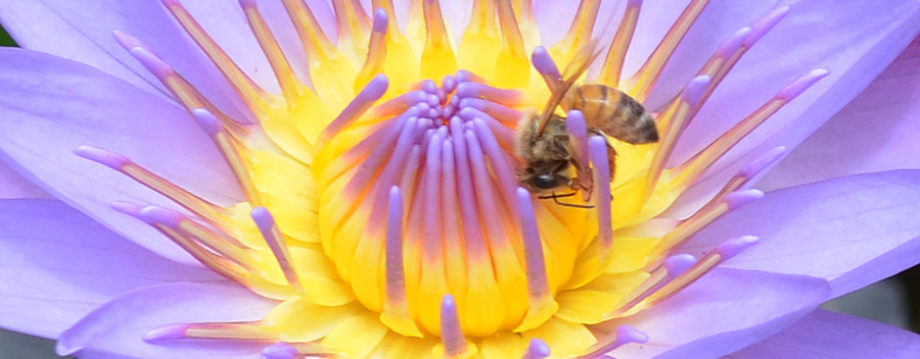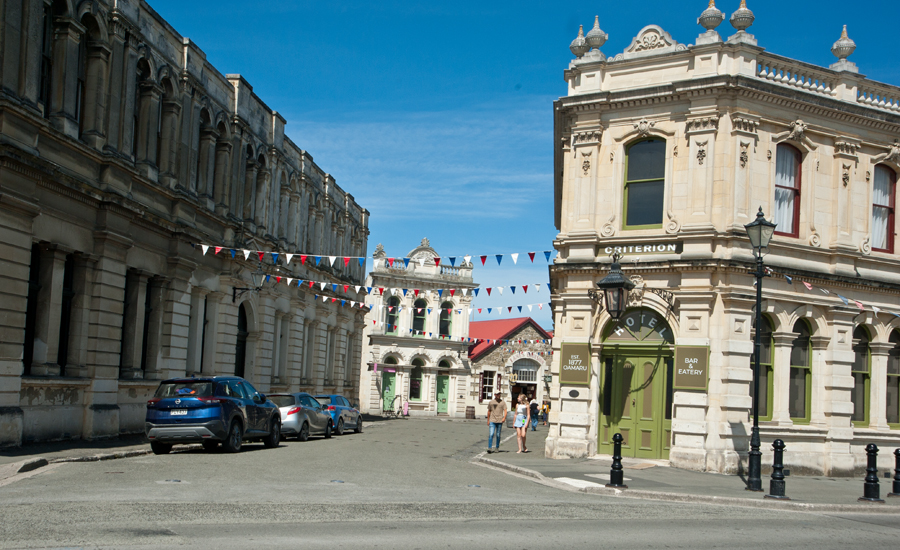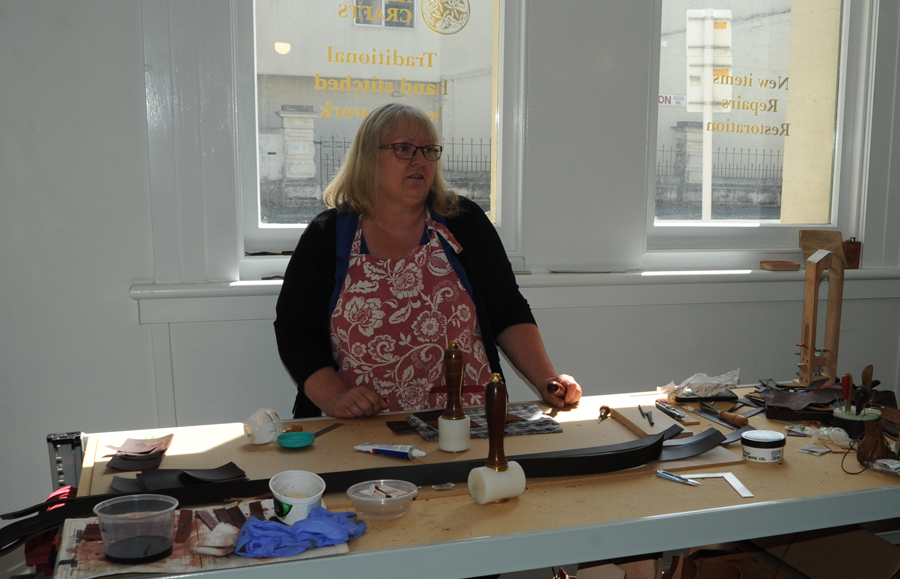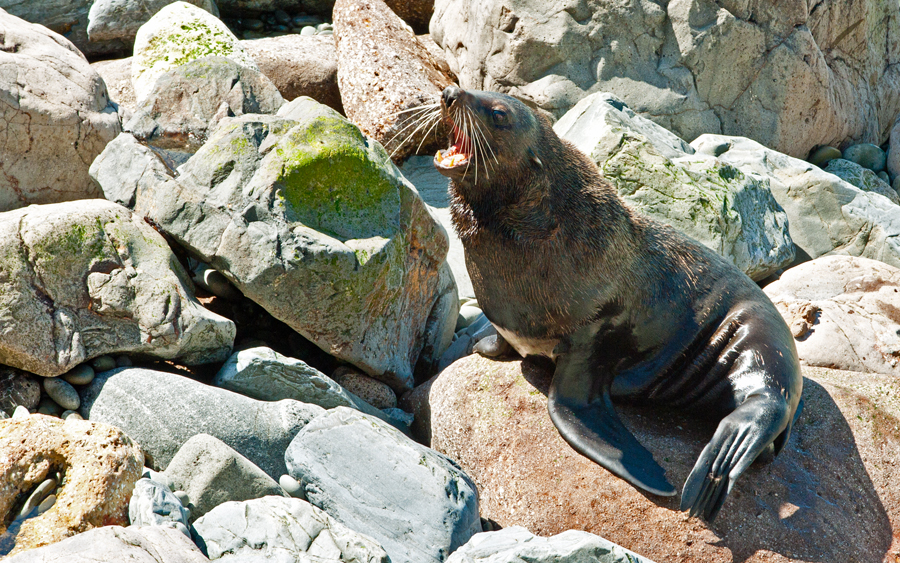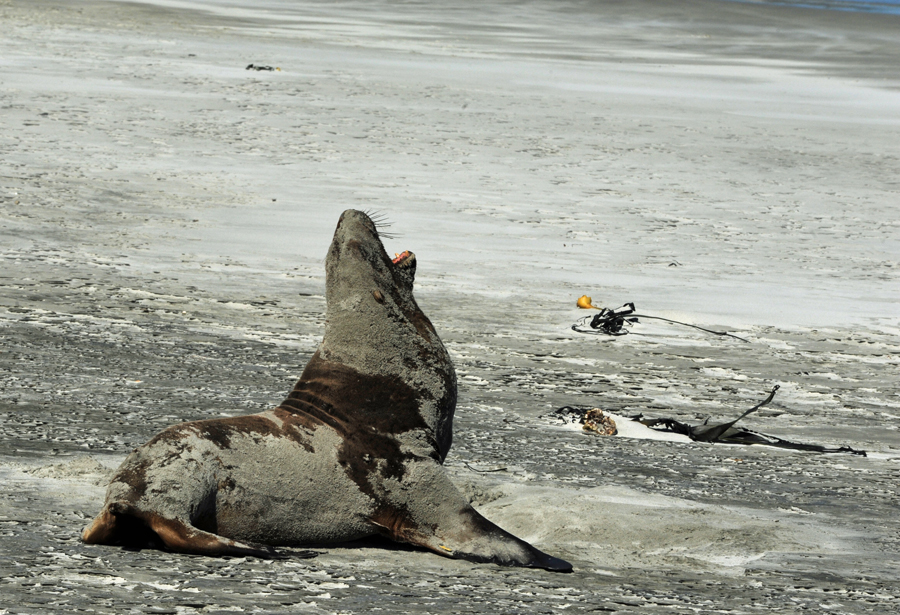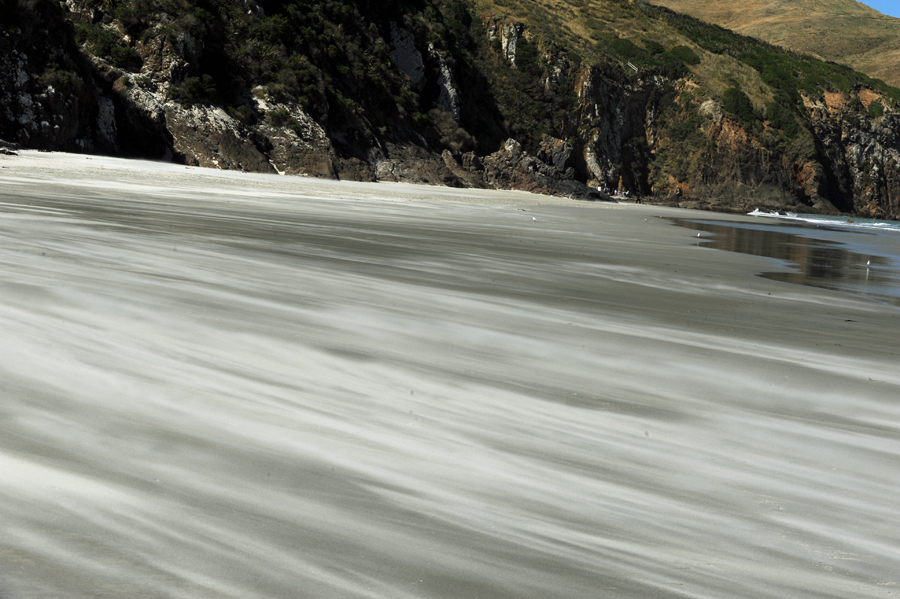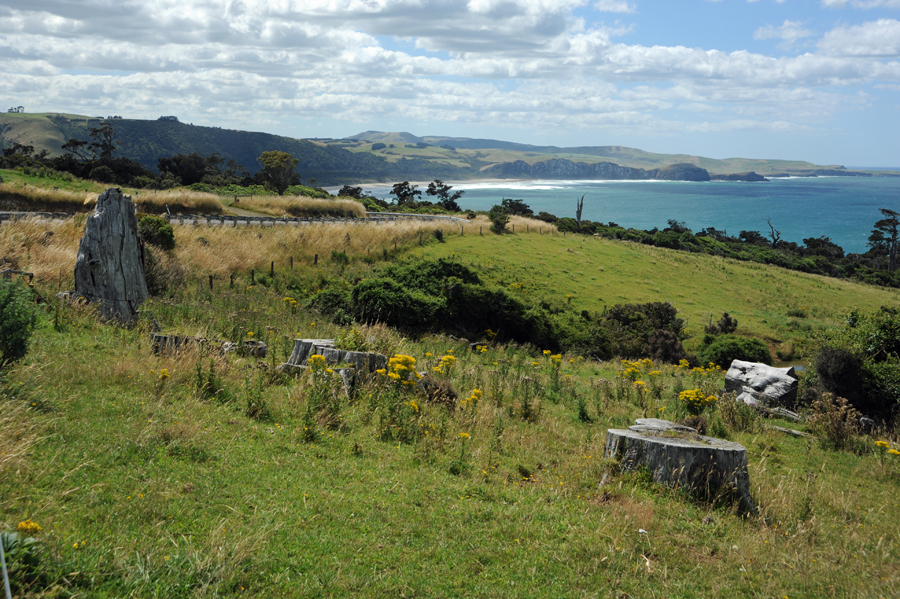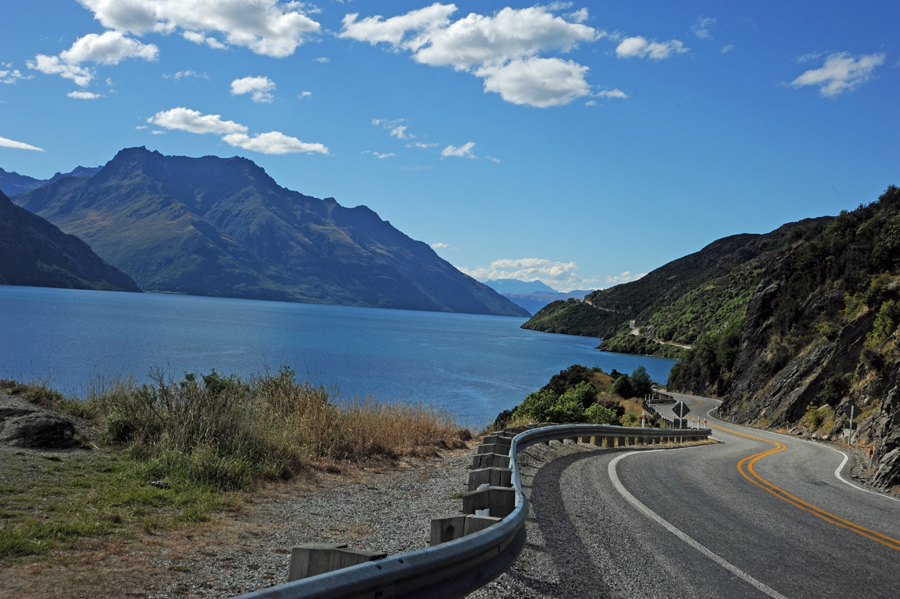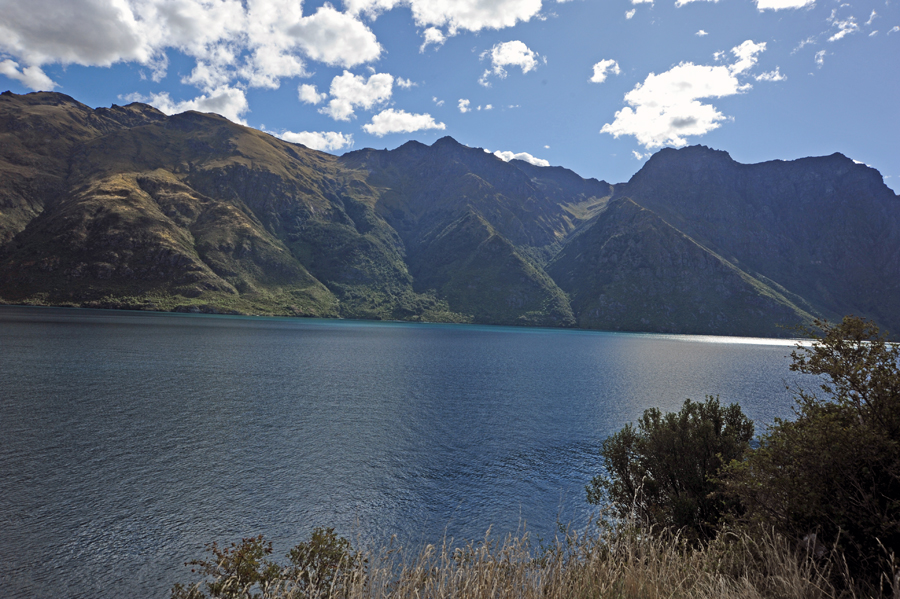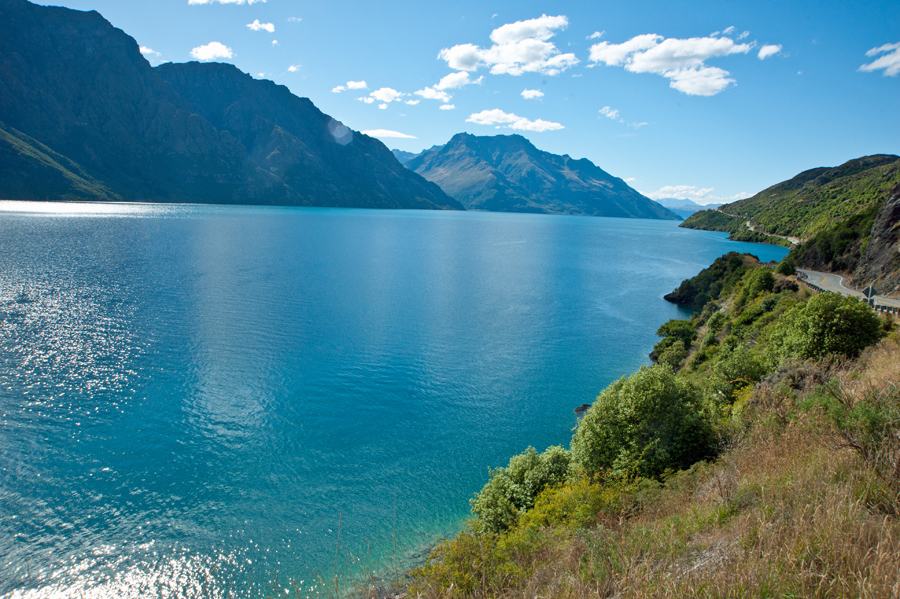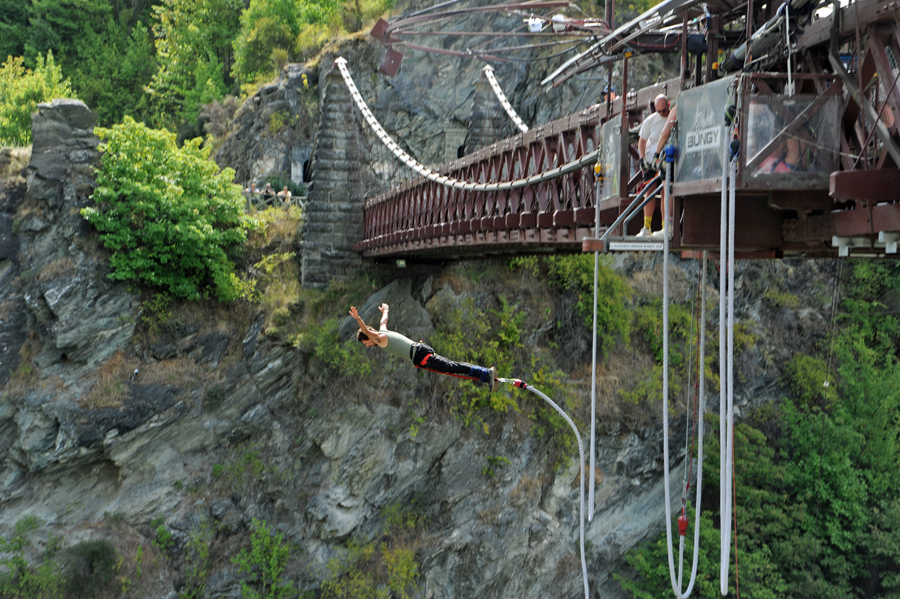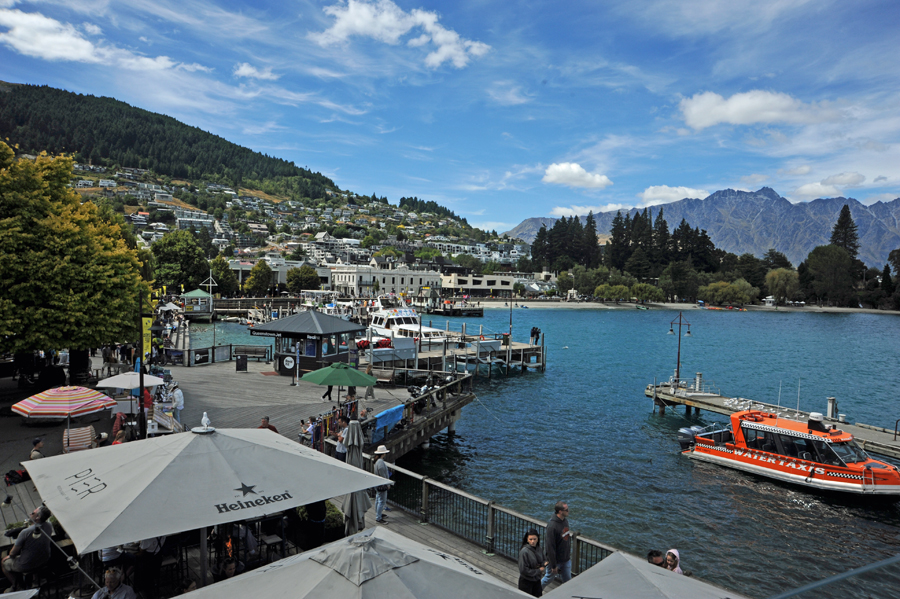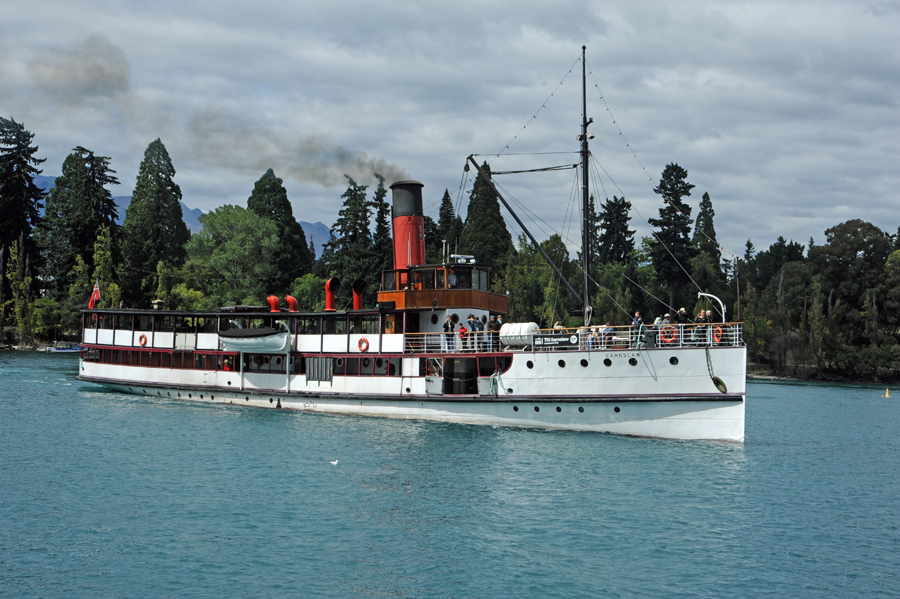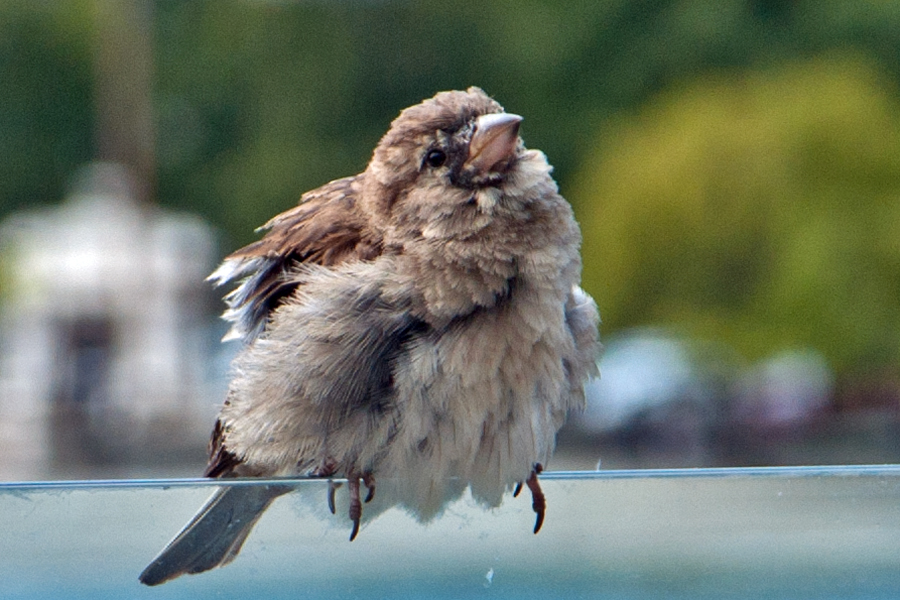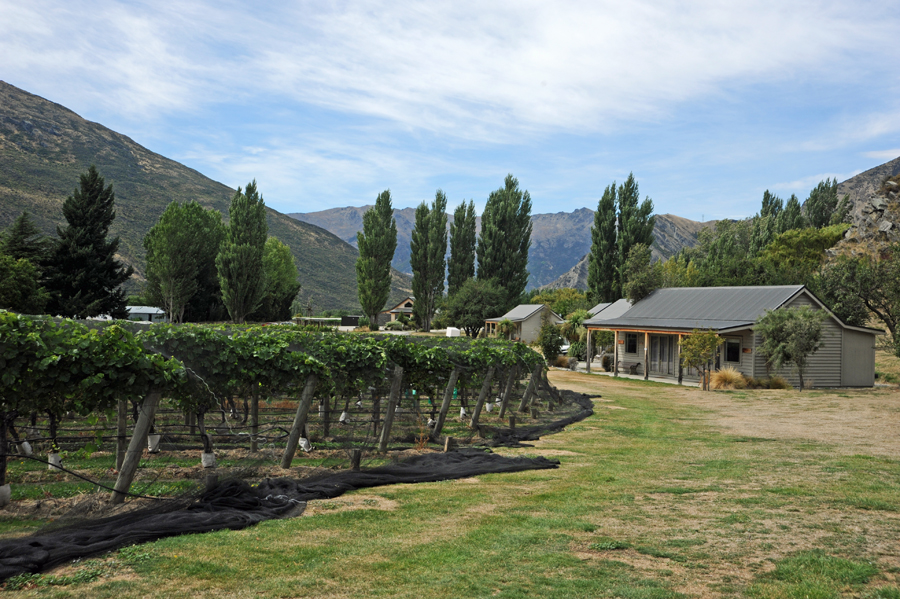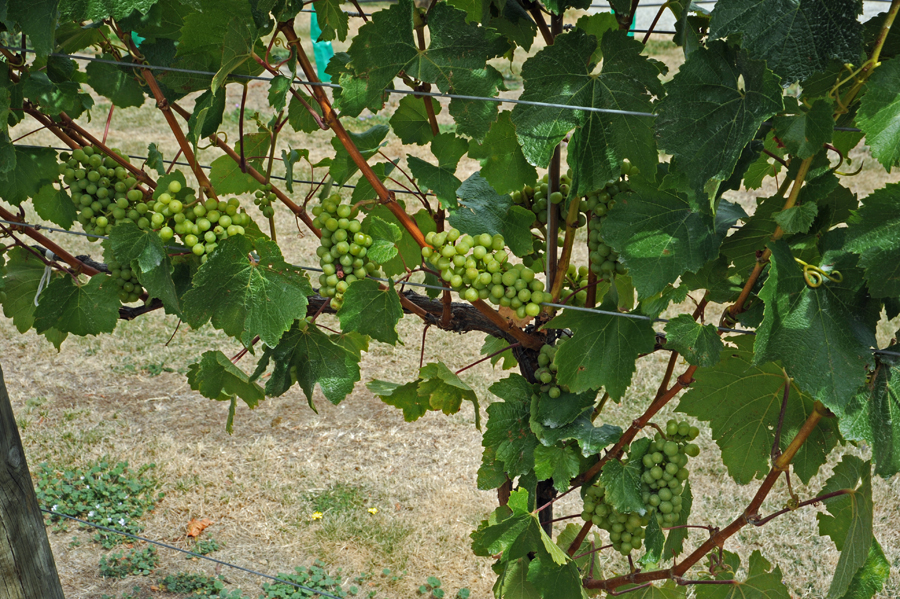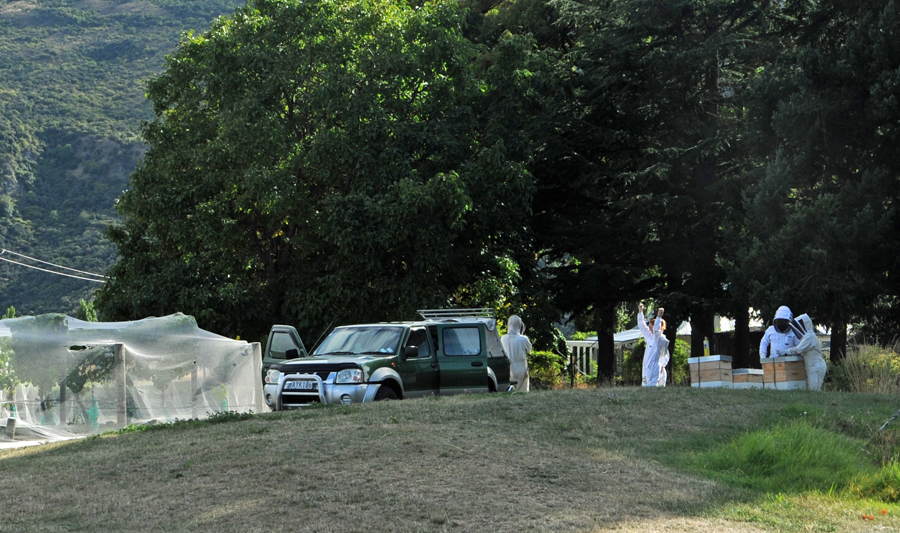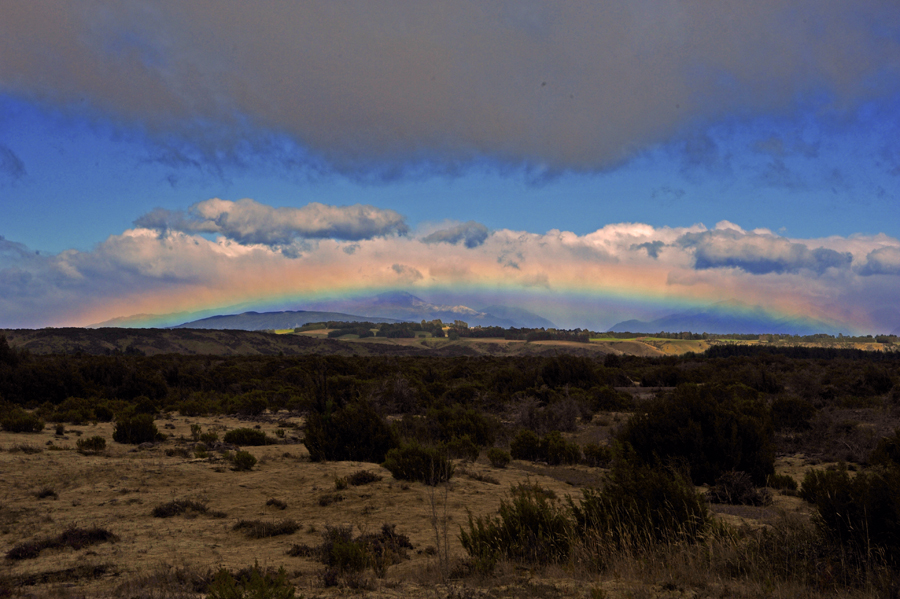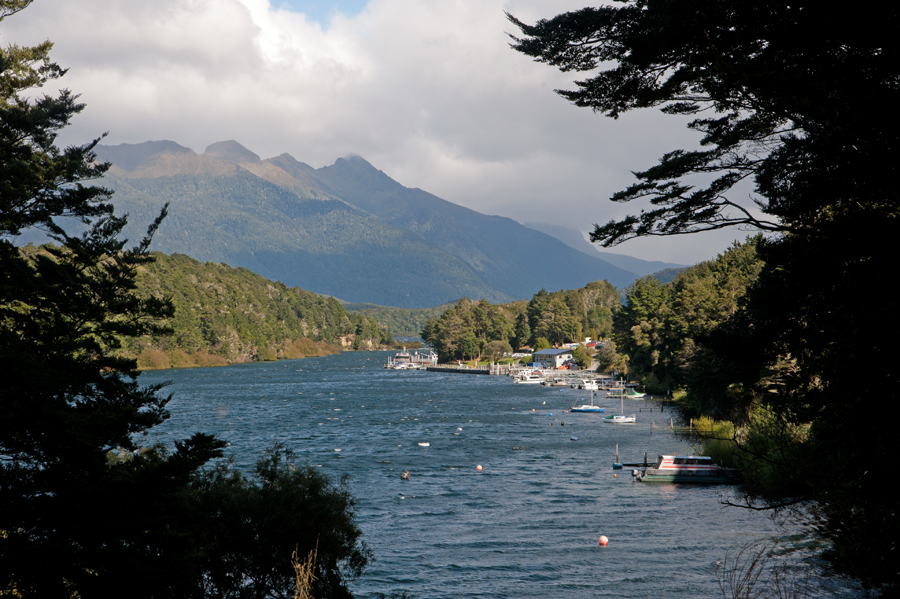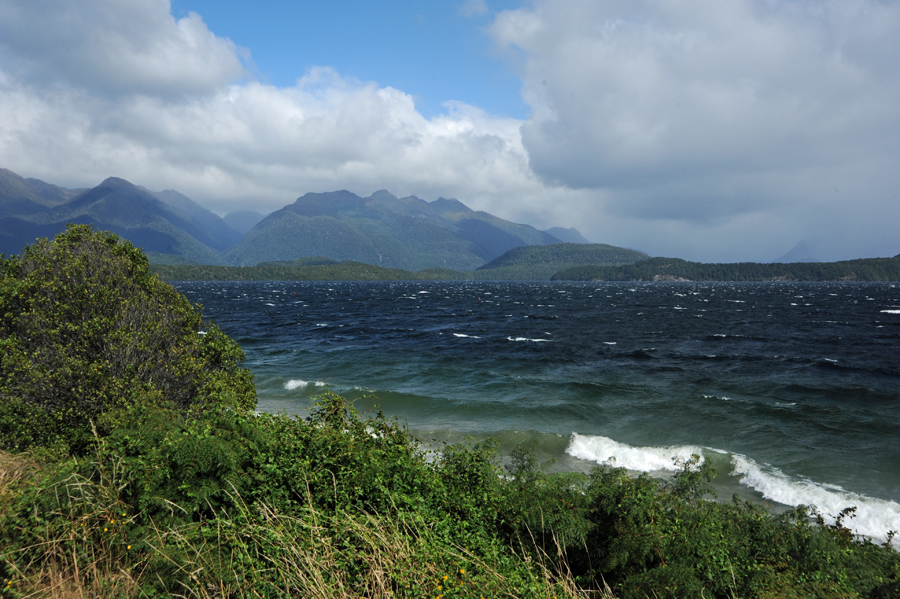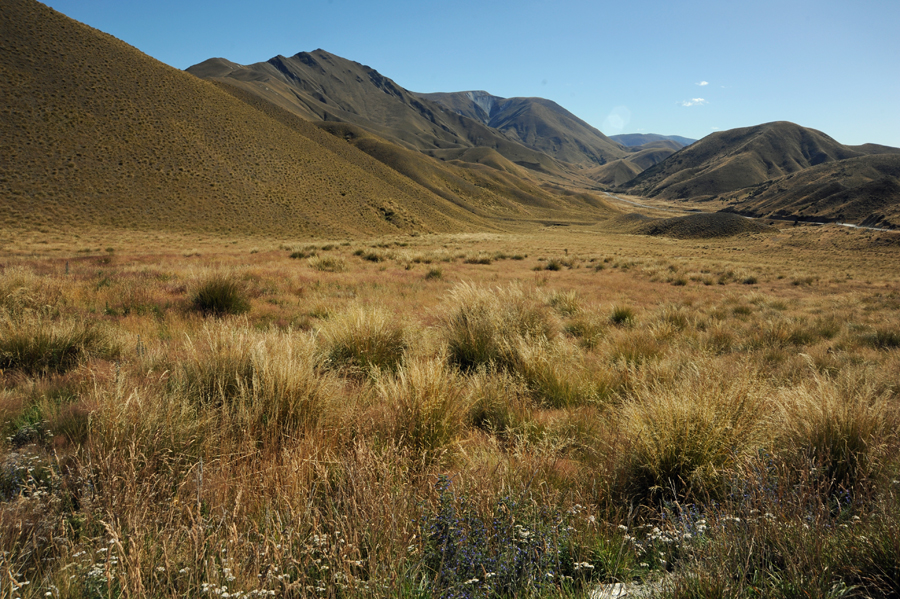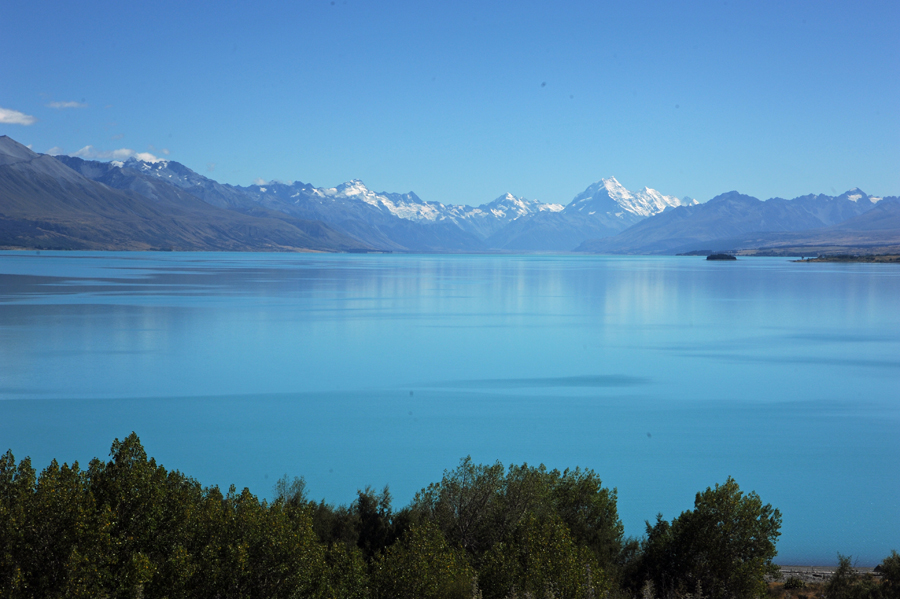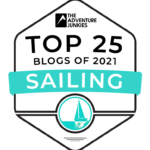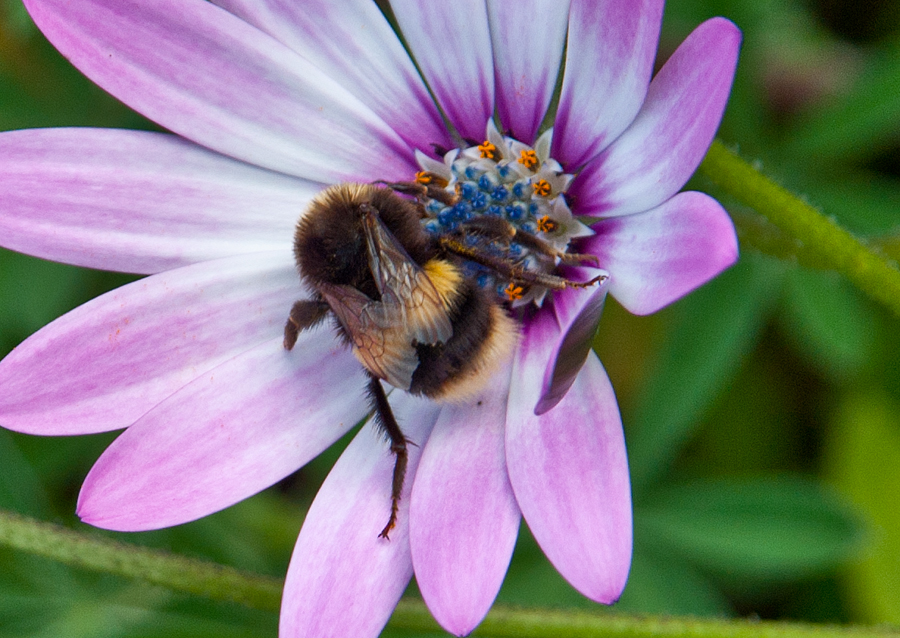
I was taking a pic of the colorful middle of this flower and was photobombed by a bee. Check out the detail in the wings as it buried its head
I think it is fair to say, the further south we moved the friendlier the people became. When was the last time you filled your car with fuel and the person behind the counter started a friendly conversation? This happened not just once.
At lunchtime, we entered the smallish town of Ashburton, Canterbury and Googled places to eat. We often do this as a way to determine decent restaurants and our options. This was where we were introduced to Robert Harris. It’s a franchise chain of cafes and we’ve noticed them more than once when looking for a place to eat. Now seems like a good time to try them.
Robert Harris is like a coffee and sandwich shop with a sorta bakery and salad option. Orders are taken at the counter and food is delivered to the table. We both ordered BLTs. It’s funny how many times Cindy and I will look at a menu and both want the same thing. The food was okay. It wasn’t anything to write home about but it did the trick and we motored on down the road with full bellies. Things got interesting when we reached Oamaru.
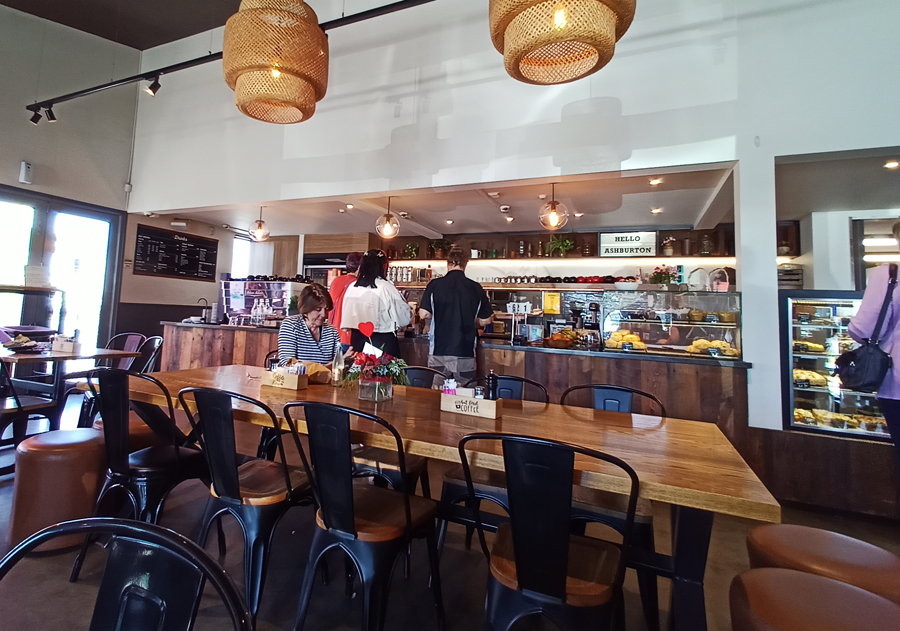
Robert Harris is like a Starbucks but with food and they don’t burn the coffee beans when they roast them
Oamaru, is a charming town steep in history and Victorian-era architecture. Known as the “Whitestone City” due to its abundance of creamy limestone buildings, Oamaru boasts a distinctive character that sets it apart. The town’s well-preserved Victorian precinct, with its elegant facades and ornate details, transports visitors back in time to the late 19th century. In addition, Thames St in the town center is rather picturesque. Click here to take a walk down the street.
In the town of Oamaru, Cindy and I had a long conversation with the owner of a leather shop, Albannach Crafts. I stopped in to purchase a belt. My only other belt has worn out. I saw her shop and thought it’d make for a useful souvenir. Our impromptu conversation lasted at least 30 minutes. We learned a little bit about life on the South Island as well as handmade leather techniques.
Oamaru was on our list of places to stop. It is a known hangout for sea lions. It is also a place where people can observe a blue penguin colony but penguins only land at sunset after a day of feeding in the ocean. Sunset here is about 9:30 pm. Because we had a couple more hours to drive, we were content with seeing sea lions.
Our reason for wanting to visit Duniden was due to reading about the wildlife we could see whilst there. This turned out to be disappointing. The AirBnB and the area was awesome. We loved the town. And, we had a great time there. But, once again the tourism guides were full of shit.
The guides hyped an albatross nesting area. We drove to it and found it was a real tourist trap. Yes, there were currently four albatross nests on the peninsular. We’ve seen a couple of albatrosses when sailing on the ocean. They will come close to the boat and fish. They are easy to spot with their large wingspan and hooked-shaped beaks. Often, they will fly near the cockpit and look at us. We thought it might be cool to see the nest. However, to see them we’d have to pay NZ$54 each to be walked down the trail to the site. That’s NZ$108 for the two of us just to see a bird we’ve already seen on the ocean. No thanks! Here is a live cam link. There, I just saved you $54 each.
In the same area was another penguin colony. But guess what, the observation deck closes when the penguins are due to arrive back and you must pay to be in a tour group to access the otherwise free area. Another thing the guides stated was an area where there are so many sea lions that a person can’t hear themselves talk over the noise. I guess nobody told the sea lions they were supposed to hang out there. There weren’t any.
This misinformation from the tour guides didn’t prevent us from finding our own wildlife. We took a couple of side roads to isolated beaches where we found more sea lions and also came across an area where seagulls were going nuts. I swear, it was like a scene from The Birds. Something in the water was like crack-cocaine for the seagulls and they were loving it.
On a side note, we actually swam with a couple of Penguins when in Galapagos. We saw them in and out of the water. So, the disappointment was minimal. It would have been nice but, it didn’t deter us from having fun.
Leaving Dunedin, we drove to Queenstown taking a longer scenic mountain and coastal road. The day was a long drive. Meaning, we couldn’t dilly-dally too much when we stopped to take in the sights. One of the great things about traveling the way we do is finding hidden gems.
One of those gems was a café we discovered for lunch. We drove into a small town at about 11:30 and looked for a place to eat. The town offered only 2 cafes. One was closed. So, the open one got our business. The food was really good. We chatted with the owner. Again, people on the South Island really operate at a different pace. They take time to talk with strangers and ask questions. My kind of place.
Included in the plan for the day was a stop at Bluff. This is the most southern point on New Zealand’s south island that can be easily reached by car. Slope Point is the southernmost part of the island but it requires a long trek down an unpaved road. Bluff was still off the route for us but we had just enough time in the day to visit. We have already been to the most northern point so, why not.
Bluff is an industrial port. It’s famous for being the oldest European settlement in New Zealand’s South Island. The town has a rich maritime history and it is particularly renowned for its oysters, which are considered a delicacy and exported worldwide. Not being oyster fans, we didn’t partake.
One of the most iconic landmarks in Bluff is the Bluff Hill/Motupohue scenic reserve which offers panoramic views of the surrounding coastline and nearby islands. This was our only stop there. And, this was a landmark destination for us.
At Bluff, this is the furthest south we’ve both ever been at 46°37′ S. It beats our other geographical records of Buenos Aries, Argentina (both of us) and Capetown, RSA (Mark). Only Chile and Argentina have land more southerly than New Zealand. Technically, Cindy has now been further south than me since she walked to the lighthouse and I didn’t.
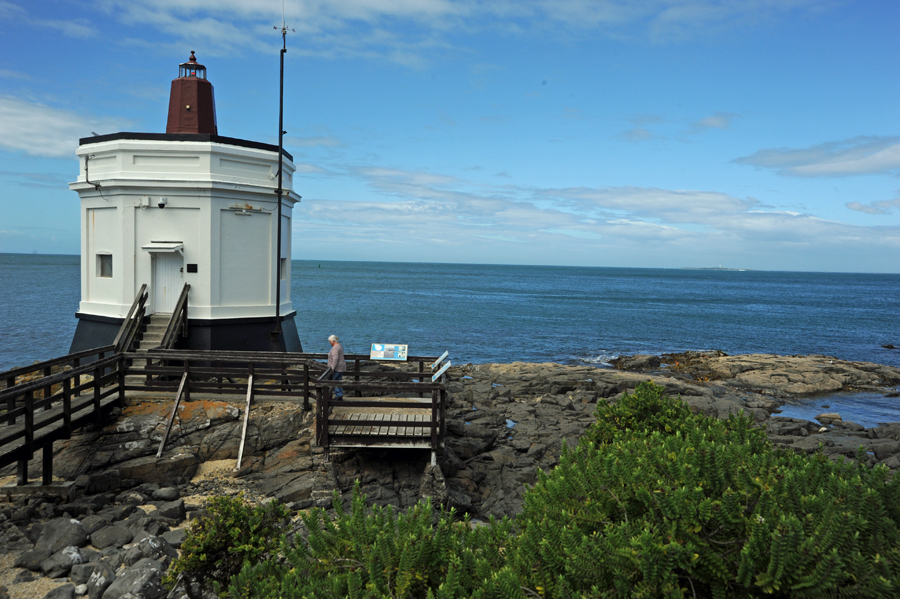
Proof that Cindy has traveled further south than me. In the background (right side) you can see Stewart Island about 33 km away on the horizon
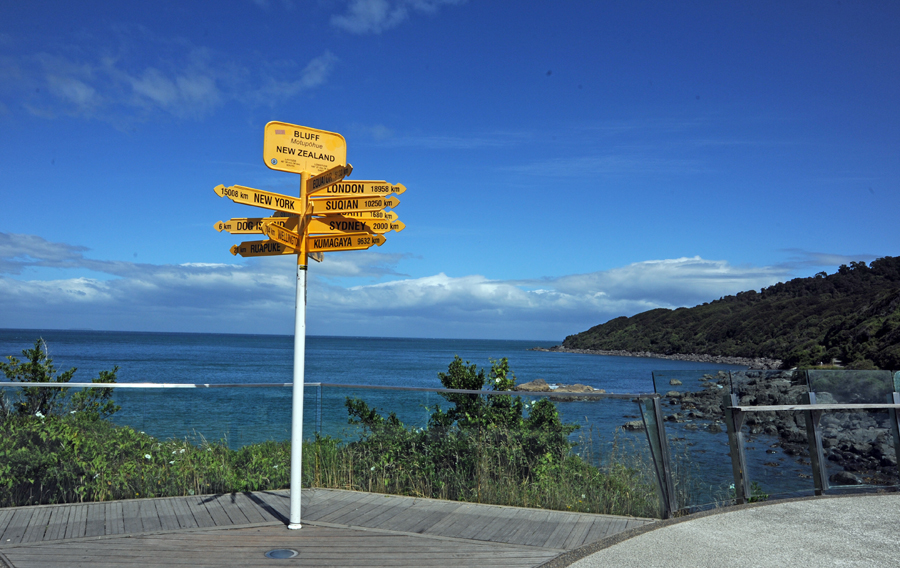
Just like the northernmost tip of the north island, the southernmost tip of the south island also has a sign
The day is getting by us and we need to push on. Cindy calls our lodgings to let them know we’ll be arriving later than planned and makes arrangements for a lock-box check-in. The road north takes us through Invercargill. I wish we could stop and walk about but alas we don’t have time. We take in the town via the windscreen of our rented Toyota.
Invercargill has some rather cool older buildings and tons of murals. Murals in New Zealand have been in just about every town we’ve visited. We love this. Some are extremely creative. All are very colorful. Along with the most public toilets, I think New Zealand wins a prize for the most murals.
As we near Queenstown, our mouths drop and we both simultaneously say, wow! We catch our first glimpse of Lake Wakatipu.
Queenstown, nestled on the shores of Lake Wakatipu and surrounded by majestic mountains, is a captivating destination on New Zealand’s South Island. Renowned as the “Adventure Capital of the World,” this picturesque town offers an exhilarating blend of stunning scenery and adrenaline-pumping activities. This is the birthplace of bungy jumping (New Zealand spelling of Bungee). AJ Hackett and Henry van Asch, established the first commercial bungy jumping operation in Queenstown in the 1980s.
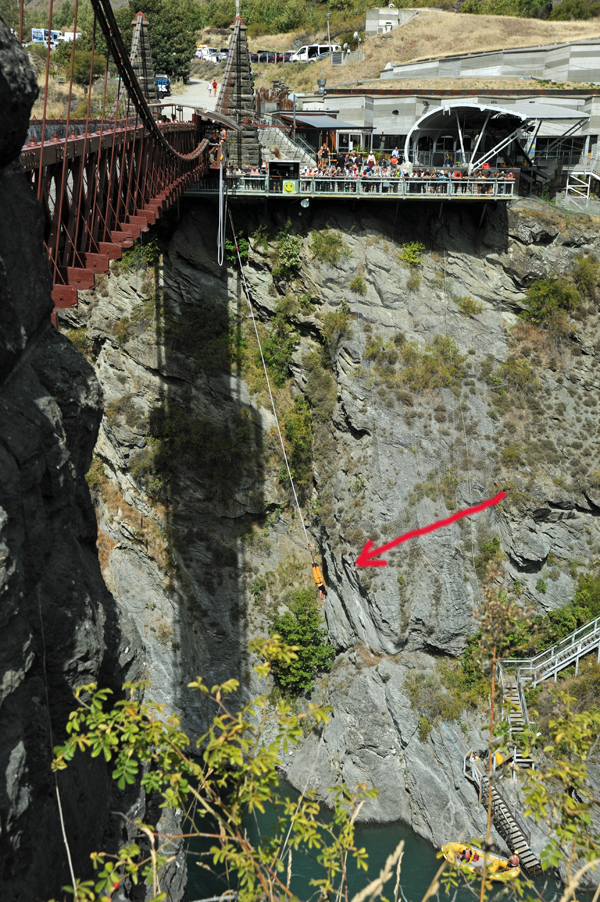
For perspective, I zoomed out so you can see the height of the bridge. This lady touched the water with her head on the first full extension.
It is not hard to understand why Queenstown is on the Top 10 Most Beautiful Towns in the World by Wonderlist. It is stunning.
Unlike most places we’ve visited in New Zealand so far, there are a lot of people here. And I mean, a lot of people. Visitors flock to Queenstown year-round to experience its wealth of outdoor adventures, not just for bungy jumping but also skydiving, skiing, hiking, and some extreme water adventures. Sadly, the area has not adjusted. Traffic and parking are big issues. And, it is crazy expensive to stay here.
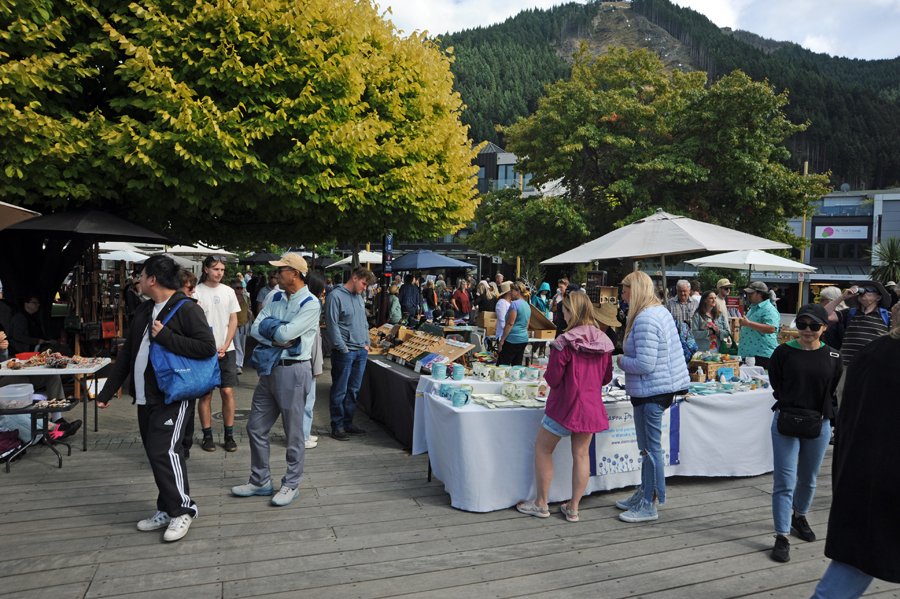
This is the most people we’ve been around in quite a long time. It’s market day. Cindy is in there shopping, somewhere.
We opted not to stay in the town. Hotels were very pricy with few amenities and any home rentals were either booked or outrageously stupid expensive. Instead, we rented a cottage at a vineyard about 30 km away putting us outside of the touristy area. After looking at prices in town, the vineyard option seemed cheap, although it wasn’t.
Our lodgings proved to be quiet and relaxing. From our cottage, we’d step out into the grapevines, see rabbits, ducks, and breathe fresh air. This was a little bit pricy for us but the experience at the winery was charming. It’s not often the only sound you hear are birds singing. It also turned out to be a great star-gazing site.
During our travels, we scheduled a couple of crash days. These are usually the day after a long drive or a few full days of activity. One of these crash days was a Sunday at the winery. We enjoyed a day on the property with a lunch in their bistro complete with wine pairings. After lunch was sitting outside and taking in the live music. This was a popular thing, apparently. The place filled up quickly. Lucky for us they gave priority to the few guests staying in the various cottages.
We commuted a couple of days to the Queenstown downtown area that buzzes with energy and features a diverse array of restaurants, cafes, bars, and shops, creating a lively atmosphere day and night. Beyond adventure sports, Queenstown’s charm lies in its natural beauty, with pristine lakes, rugged landscapes, and scenic trails inviting exploration. The town serves as a gateway to the breathtaking Fiordland National Park and iconic Milford Sound, drawing nature enthusiasts and photographers from around the world. Whether seeking thrills on the slopes, tranquility by the lake, or simply soaking in the stunning surroundings, Queenstown offers an unforgettable experience.
We used one of our days while staying at the winery to drive to Fiordland National Park and iconic Milford Sound. It was an early start and rained on us for the first part of the journey. It was also extremely windy. Once you see this area, it is entirely understandable why Rudyard Kipling (English writer and poet) called it the eighth wonder of the world. Thankfully the rain subsided and we enjoyed some of the most breathtaking scenery ever.
Leaving Queenstown, there are two driving options. The quick route and the inland scenic route. The inland route adds about an hour to the 4 ½ hour drive to Christchurch. This is the route we chose. Oh boy! I’m so glad we did.
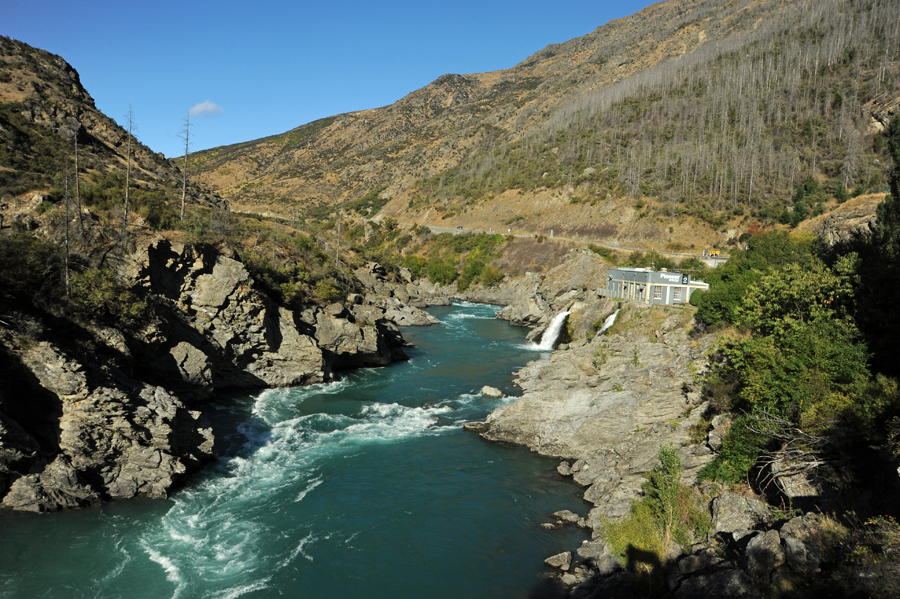
Just outside of Queenstown the road follows a river and has a pump station for the hydro-electric plant
On New Zealand’s south island, the scenery drastically changes within 100 kms, or so. You can go from flatlands and farms to mountainous terrain, from a warm valley to a cool mountain pass, or from baron land to a forest. It is truly amazing to see.
We had no idea what the drive back to Christchurch would be like. It turned out to be awesome. We traveled through the Lindis Pass over the mountain range. This is mostly brown baron land with few trees and stubby bushes. It didn’t take long to reach a stretch of road offering views of the snow capped Southern Alps. Just a couple of weeks ago, we were walking up there on a glacier.
Back in Christchurch, we had an apartment for a couple of nights. This gave us just enough time to drop off our now very dirty rental car and, don’t judge me for this, lunch at Taco Bell. Yes, they have Taco Bell here. The moment we saw the sign we both got excited. It’s been years since we “headed for the border”. This was a real treat. It tasted just like the USA.
Our car rental office was out by the Christchurch airport. After the drop-off and our Tacos, we took the bus back into town. New Zealand has great public transportation in the city areas. When telling the bus driver where we wanted to get off, I am reminded how even though English is spoken here there are subtle differences.
I said we wanted to get off the bus at the main station. He thought I meant railway station (train station – USA). So then, I corrected myself and said bus terminal. He said, oh you mean the bus depot. Yes, I mean the bus depot.
We also had one more chance to grab another Breakfast Bun at the Riverside Corner Grill. OMG! So good.
Our next adventure is Picton at the northern tip of New Zealand’s South Island. From Picton, we catch the ferry back to New Zealand’s North Island and land in the capital city of Wellington. This and more in Part IV.
